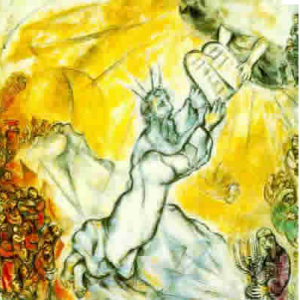 The life of an enterprise rests firmly on its ability to pursue its vision of the future. How can we capture and implement that vision?
The life of an enterprise rests firmly on its ability to pursue its vision of the future. How can we capture and implement that vision?
Dr. Domenico Lepore, international expert in systemic management, continues his series on the Thinking Process Tools from the Theory of Constraints.
What is the future?
Let’s allow ourselves a moment of speculation. What is the future? This is not a rhetorical question, on the contrary. The life of an enterprise, its ability to stand the test of time, its possibility to wade through the ups and downs of the markets rests firmly on its ability to pursue its vision of the future. A vision of the future for an enterprise cannot be the outcome of a strategic meeting where a few executives develop a plan to react to some ill-understood events or to push something based on personal agendas. Nor can it be some opportunistic decision driven by purely monetary reasons.
Taking the responsibility to make the future happen
The future is not the present in a few years time, neither is it what happens regardless of what we do. Building the future is about taking the responsibility to make the future happen; it is about striving to understand better and better the implications of what we do. A vision of the future is certainly the responsibility of the top management but calls, first and foremost, for the ability to subordinate to that vision, regardless of the circumstances. People’s involvement in building a future they can associate themselves with is essential.
If we take our understanding seriously, if we value our ability to anticipate what future events will be like as a result of our actions, if we truly believe in cause-and effect thinking, then we must be able to subordinate to that future reality and walk on that bridge.
The bridge of Knowledge
The bridge that brings us to the desired future and that makes that future possible is knowledge. Let me repeat what I said earlier in the book. Knowledge is not erudition and it is not information. Knowledge is not know-how and it is not experience.
Knowledge is based on theory and must allow prediction. As W. Edwards Deming has taught us, without the ability to predict there is no management. However, in order for this knowledge to deliver results we must be one with it. Knowledge cannot be disconnected from the consciousness that should permeate it. If the knowledge needed to execute the injections of the Future Reality Tree (see previous post) is not in synch with the change in reality that the application of that knowledge will create; if the unfolding of the pattern we have chosen creates a disconnection between the holder of the knowledge and the sense of who they are in the new reality; if what people know does not match the image they have of themselves in the new reality, then the transformation from the present to the future will not happen.
There are two Thinking Process Tools from the Theory of Constraints that help to deploy the necessary knowledge and the possession of it together with an increased self-consciousness: the Prerequisite Tree (PRT) and the Transition Tree (TRT).
We will look at these in the coming posts.
An extract from the book:
Sechel: Logic, Language and Tools to Manage any Organization as a Network
See also:
Separating Wants from Needs: Tools for Thinking Systemically
Connection and Transformation with the Conflict Cloud Tool
How Control Vs. Vision Leads to Breakthrough with the Core Conflict Cloud
Challenging the Mental Models of Organizations with the Core Conflict Cloud
Designing A Desirable Future for an Organization: the Future Reality Tree
Thinking Process Tools for Managing Systemically
Change: Tools for Thinking, Planning and Enacting Change
Training Sessions to learn these Tools





Leave a Reply